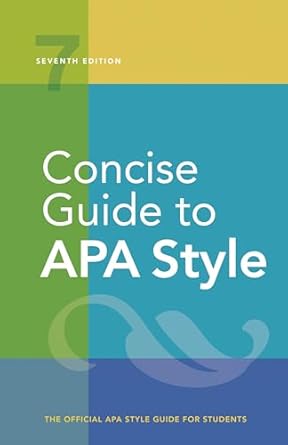[toc]
informal citations software a quick guide
Concise Guide to APA Style: 7th Edition (OFFICIAL)
Page 296 Review
Navigating the Landscape of Informal Publications and Software Citations: A Critical Review
In the ever-evolving realm of academic research, the boundaries of formal and informal publications are increasingly blurred.
This excerpt provides valuable guidance on how to navigate this complex landscape, particularly when citing informally published works and referencing software applications.
Let’s delve into the nuances highlighted in this section.
Informally Published Work: Preprints and Institutional Repositories
The excerpt begins by addressing the citation of informally published work, specifically focusing on preprints and articles from institutional repositories.
It uses the following examples:
- Leuker, C., Samartzidis, L., Hertwig, R., & Pleskac, T.
J. (2018).
When money talks: Judging risk and coercion in high-paying clinical trials.
PsyArXiv. https://doi.org/10.17605/OSF.
IO/9P7CB
- Stults-Kolehmainen, M.
A., & Sinha, R. (2015).
The effects of stress on physical activity and exercise.
PubMed Central. https://www.ncbi.nlm.nih.gov/pmc/articles/PMC3894304
The excerpt correctly notes the importance of including the URL or DOI for easy access to the cited material.
It also clearly differentiates between parenthetical and narrative citations:
- Parenthetical citations: (Leuker et al., 2018; Stults-Kolehmainen & Sinha, 2015)
- Narrative citations: Leuker et al. (2018) and Stults-Kolehmainen and Sinha (2015)
A crucial point emphasized is the varying degree of peer review associated with informally published works. “The informally published work may not be peer reviewed (as with Leuker et al’s preprint article from PsyArXiv), or it may be the author’s final, peer-reviewed manuscript as accepted for publication (as with Stults-Kolehmainen & Sinha’s manuscript from PubMed Central).” This distinction is vital, as researchers must critically evaluate the credibility of the source before relying on its findings.
The section correctly directs the reader to Section 8.5 for further information on archival versions.
This cross-referencing contributes to the document’s utility.
Informally Published Work: ERIC Database
The section then transitions to citing work from the ERIC database:
- Ho, H.-K. (2014).
Teacher preparation for early childhood special education in Taiwan (ED545393).
ERIC. https://files.eric.ed.gov/fulltext/ED545393. pdf
The excerpt correctly highlights the importance of including the ERIC document number in parentheses after the title. “ERIC assigns document numbers to works in its database.
Include this number in parentheses after the title of the work.” This ensures accurate identification and retrieval of the cited document.
The parenthetical and narrative citation examples follow the established conventions:
- Parenthetical citation: (Ho, 2014)
- Narrative citation: Ho (2014)
Software and Tests: Computer Software and Mobile Apps
The excerpt then shifts focus to the citation of software and mobile apps.
It establishes a clear guideline: “Common software and mobile apps mentioned in text, but not paraphrased or quoted, do not need citations, nor do programming languages.” This is a practical and sensible approach.
The excerpt provides examples of such “common” software:
- Microsoft Office (e.g., Word, Excel, PowerPoint)
- Social media apps (e.g., Facebook, Instagram, Twitter)
- Survey software (e.g., Qualtrics, Survey Monkey)
- Adobe products (e.g., Adobe Reader, Photoshop, Adobe Acrobat)
- Java, and statistical programs (e.g., R, SPSS, SAS)
The crucial caveat is that “Common’ is relative to your field and audience.” The excerpt correctly advises that for software or apps used during research, “simply give the proper name of the software or app along with the version number in the text, if relevant.” This ensures transparency and reproducibility of the research.
Overall Assessment
This excerpt provides clear and concise guidance on citing informally published works and referencing software.
The use of concrete examples, differentiation between parenthetical and narrative citations, and emphasis on the context-dependent nature of “common” software contribute to its practical value.
The distinction made between peer-reviewed and non-peer-reviewed informal publications is especially important for maintaining academic rigor.
The document is well-organized and easy to understand, making it a valuable resource for researchers navigating the complexities of modern citation practices.
Buy full ebook for only $18: https://www.lulu.com/shop/american-psychological-association/concise-guide-to-apa-style-7th-edition-official/ebook/product-rmzpq54.html?page=1&pageSize=4
Informal Citations Software A Quick Guide
Read more: Writing Style & Grammar: Book Excerpt Review</
Read more: In-Text Citation Guide: Mastering Author & Date Formats</


Leave a Reply